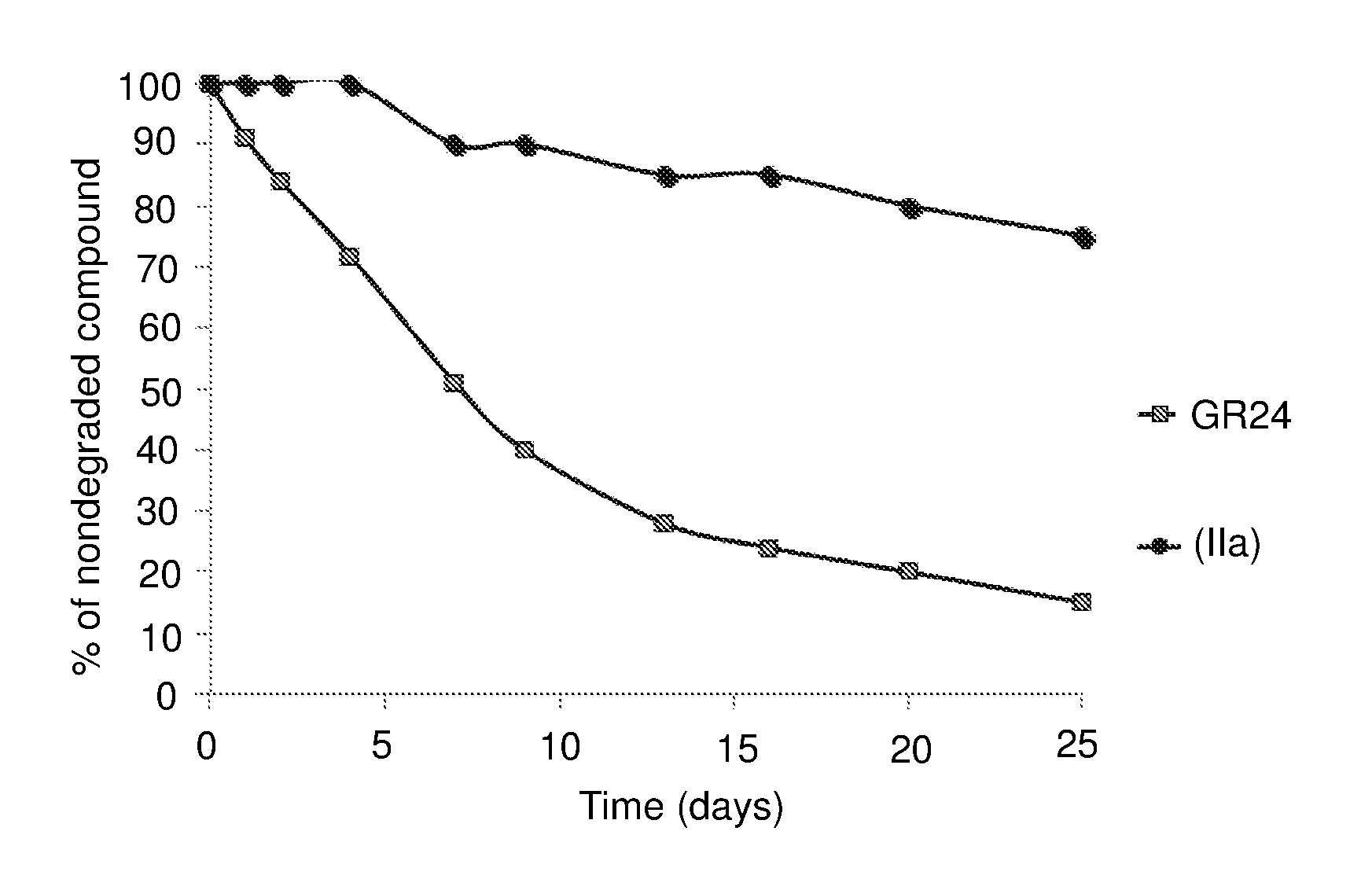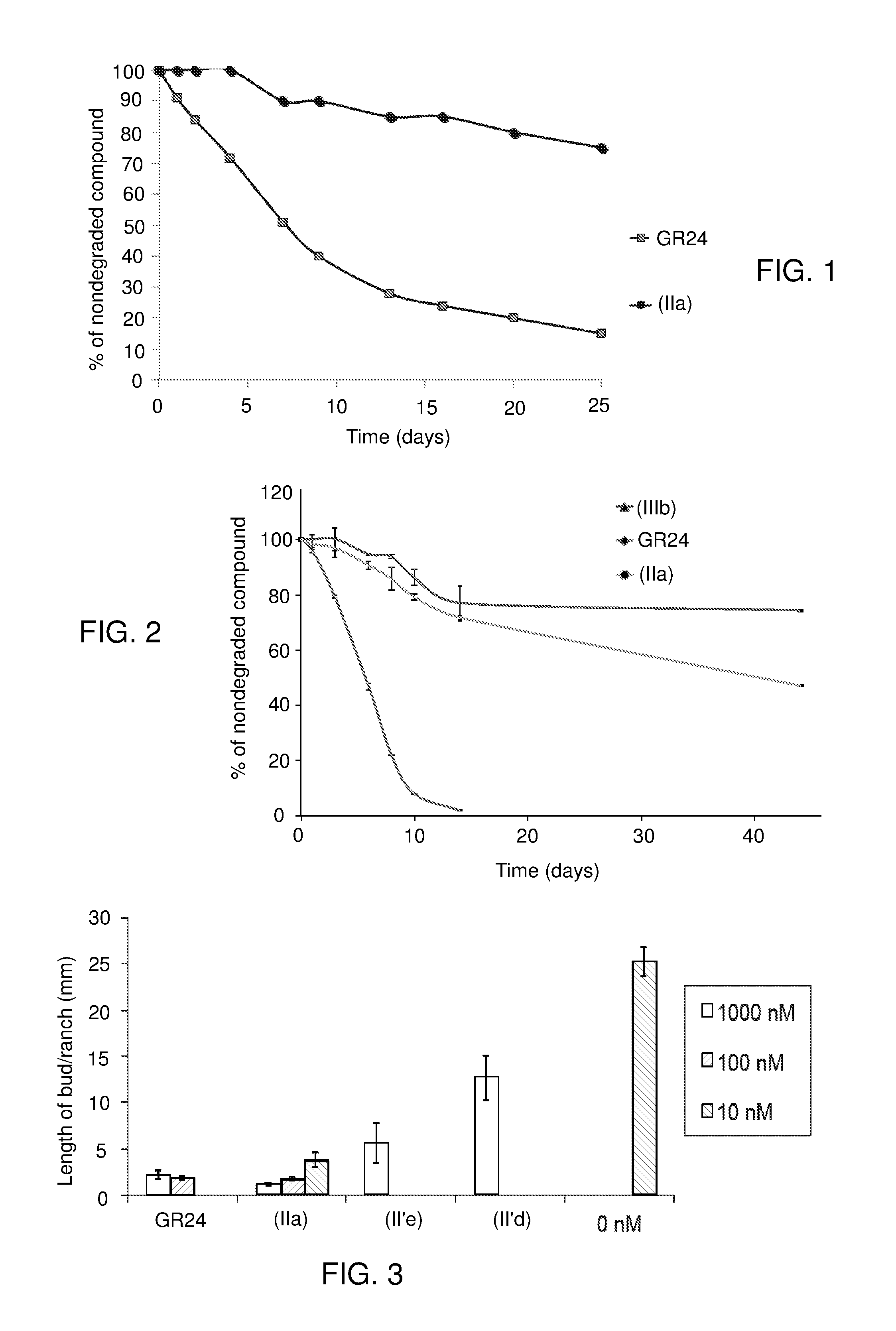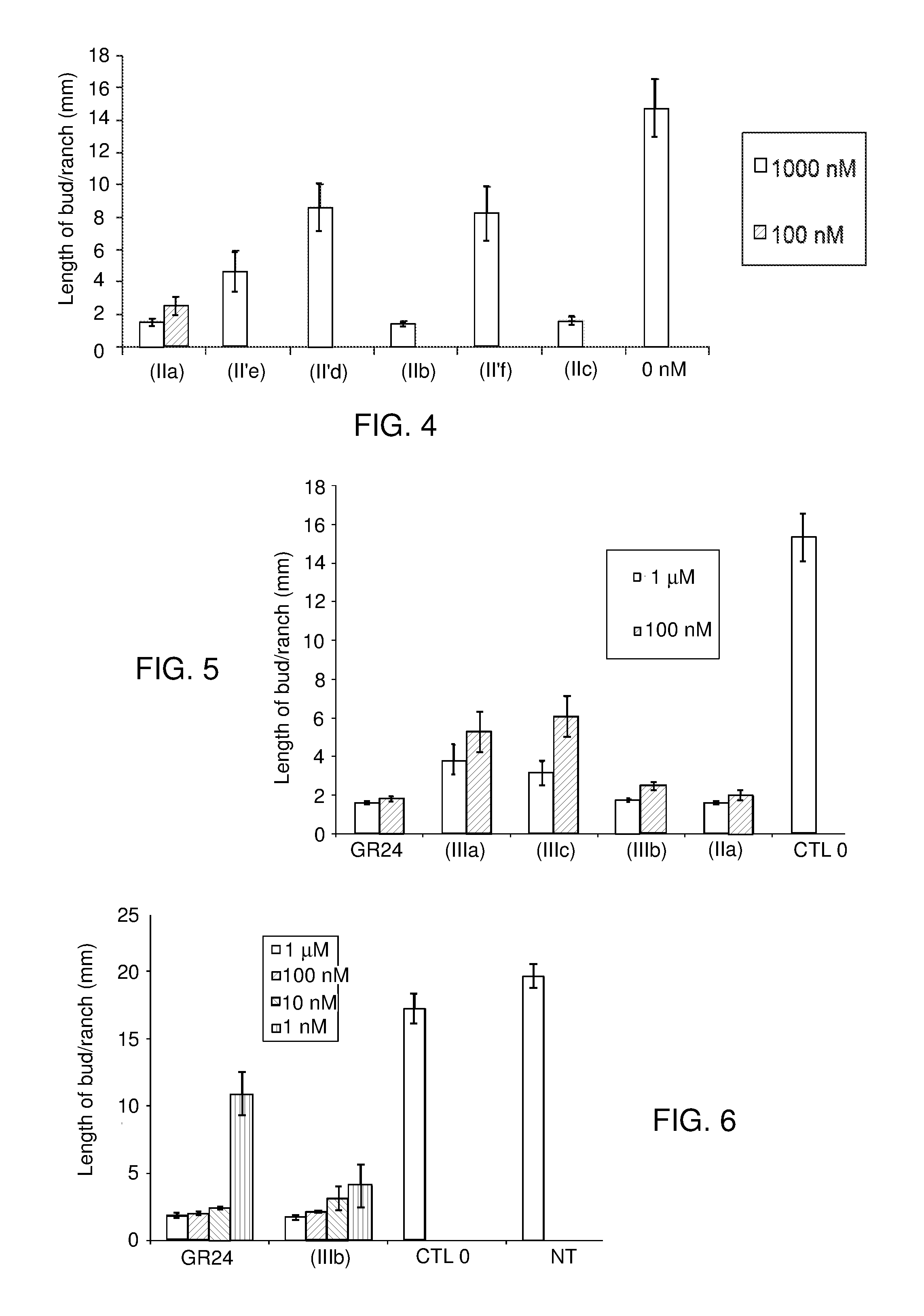Strigolactone analogues and the use thereof for the treatment of plants
a technology of strigolactone and analogues, applied in the field of compounds, can solve the problems of difficult to achieve the effect of reducing cytotoxicity, easy to synthesize, and high cost, and achieves the effect of less cytotoxicity and simple synthesizing
- Summary
- Abstract
- Description
- Claims
- Application Information
AI Technical Summary
Benefits of technology
Problems solved by technology
Method used
Image
Examples
example 1
Synthesis of Examples of Compounds According to the Invention and of Examples of Comparative Compounds
[0114]1 / Materials and Methods
[0115]The infrared spectra were recorded in a film on a diamond window. The data are given in cm−1 (ν, cm−1).
[0116]The 1H and 13C NMR spectra were recorded on solutions in CDCl3, using the protic solvent CHCl3 (δH=7.24 ppm) or CDCl3 (δC=77.23 ppm) as internal reference and are given in ppm.
[0117]The mass spectra were determined by electrospray ionization (ESI).
[0118]All the reactions were monitored by thin layer chromatography (TLC) on 0.2 mm aluminum plates precoated with silica gel, using UV light and an ethanolic solution containing 5% of phosphomolybdic acid, and heat as developing agent.
[0119]Flash chromatography was carried out on silica gel 60, 40-63 μm (400-230 mesh), with ethyl acetate (EtOAc) and heptane as eluents.
[0120]The commercially available reagents and solvents were purified and dried when necessary using conventional methods.
[0121]Dim...
example 2
Studies of Stability in Aqueous Medium
[0251]1 / Compound (IIa)
[0252]The stability in aqueous medium of the compound (IIa) according to the invention and that of GR24 as comparative compound was evaluated in the following way.
[0253]Each compound was diluted in acetone (1 ml), then 50 μl of each solution were diluted with methanol (175 μl) and water (750 μl) so as to obtain a compound concentration of 50 μg / ml.
[0254]The aqueous solution thus obtained was incubated at 21° C. in HPLC vials.
[0255]Indanol (25 μl of a solution at 1 mg / ml in acetone) was added to each solution in order to serve as an internal standard.
[0256]The degradation of each compound over time was monitored by analysis of samples taken from the solution at various time intervals, by Ultra Performance Liquid Chromatograpy (UPLC) by means of an Acquity UPLC HSS C18 column (1.8 μm, 2.1×50 mm), eluted first of all with a solution of acetonitrile at 5% in water containing 0.1% of formic acid, for 0.5 min, then with a gradie...
example 3
In Vitro Cytotoxicity Study
[0265]The cytotoxicity of the compound (IIa) according to the invention, and that of GR24 and of GR5 as comparative compounds, was evaluated in vitro, at concentrations of 10−4 M and 10−5 M, on MRC5 cells, in DMSO, in the following way.
[0266]MRC5 cells (human lung (fibroblasts) were cultured in Dulbecco's modified Eagle medium (DMEM) supplemented with: 25 mM of glucose, 10% (v / v) of fetal calf serum, 100 IU of penicillin, 100 μg / ml of streptomycin and 1.5 μg / ml of fungizone, and kept under 5% of CO2 at 37° C.
[0267]96-well plates were seeded with 2100 MRC5 cells per well in 200 μl of medium. After 24 hours, each of the compounds dissolved in DMSO was added for 72 hours, at a final concentration of 10−4 M or 10−5 M in a fixed volume of DMSO. The controls received an equal volume of DMSO.
[0268]The viable cell number was measured at 490 nm with the MTS reagent (Promega), and, for each compound, the concentration causing 50% inhibition of cell growth, IC50, was...
PUM
| Property | Measurement | Unit |
|---|---|---|
| diameter | aaaaa | aaaaa |
| transparent | aaaaa | aaaaa |
| pH | aaaaa | aaaaa |
Abstract
Description
Claims
Application Information
 Login to View More
Login to View More - R&D
- Intellectual Property
- Life Sciences
- Materials
- Tech Scout
- Unparalleled Data Quality
- Higher Quality Content
- 60% Fewer Hallucinations
Browse by: Latest US Patents, China's latest patents, Technical Efficacy Thesaurus, Application Domain, Technology Topic, Popular Technical Reports.
© 2025 PatSnap. All rights reserved.Legal|Privacy policy|Modern Slavery Act Transparency Statement|Sitemap|About US| Contact US: help@patsnap.com



